James Webb Space Telescope: The scientific mysteries no other observatory could unravel
The James Webb Space Telescope will change our view of the universe.
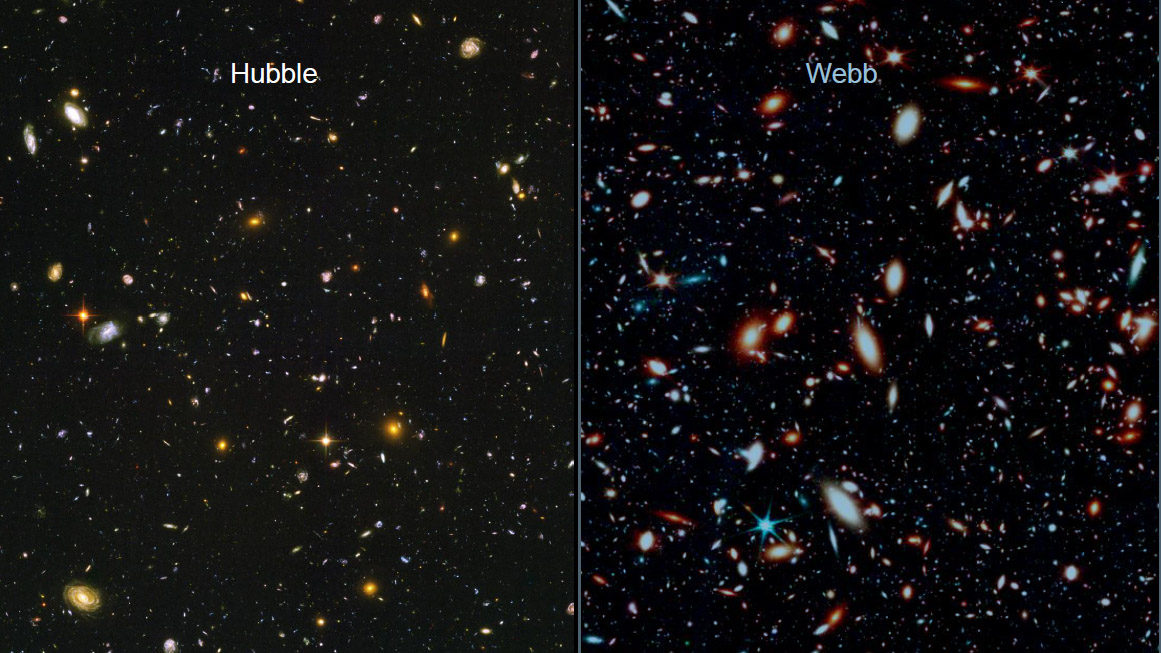
When scientists planned and designed the Hubble Space Telescope, the most groundbreaking astronomical observatory of its era, there were many things about the universe they didn't know. One of these unknowns was that stars and galaxies existed already a few hundred million years after the Big Bang, Mark McCaughrean, senior advisor for science and exploration at the European Space Agency (ESA), told Space.com.
But even if they had known about these early stars and galaxies, they didn't have the technology to make Hubble see them.
"Hubble had a whole bunch of top line goals, many of which were like 20 years old," said McCaughrean, who is also an interdisciplinary scientist at NASA's James Webb Space Telescope (JWST) science working group. "By the time they built it, science had moved, science had changed in some areas. And one of the things that astronomers discovered in the 1980s [shortly before Hubble's 1990 launch], was that galaxies formed much earlier than expected."
Related: How the James Webb Space Telescope works in pictures
It became obvious that another, even grander, space observatory will be needed to get to those early stars and galaxies — those that had lit up the universe after hundreds of millions of years of darkness that followed the Big Bang when the expanding space was only filled with hydrogen atoms.
The technology that would eventually enable this observatory, now known as the James Webb Space Telescope (originally called the Next Generation Space Telescope), to see that mythical first light in the universe, had yet to be developed.
The power of infrared eyes
This missing piece of technology was infrared detectors that would be able to collect the faint light coming from those early stars and galaxies more than 13 billion light-years away.
Get the Space.com Newsletter
Breaking space news, the latest updates on rocket launches, skywatching events and more!
Hubble was built to detect visible and ultraviolet light. These early galaxies do emit visible light, but because of their distance, the wavelength of this light gets stretched into the infrared part of the electromagnetic spectrum by the so-called redshift.
McCaughrean, then a PhD student at the University of Edinburgh in Scotland, was one of those scientists developing early infrared detectors, a technology that has now reached its culmination in four cutting-edge scientific instruments of the James Webb Space Telescope.
"In the 1980s, infrared pictures were taken with one detector scanning the sky one pixel at a time," said McCaughrean. "It took forever. My PhD thesis was all about the first camera which could take 2D infrared images. We had 58 times 62 pixels, and that was 4,000 times more than everybody else had, because they only had one."
McCaughrean later moved to the U.S. to work on the Near Infrared Camera and Multi-Object Spectrometer (NICMOS), the first infrared detector fitted on the Hubble Space Telescope during its second servicing mission in 1997. NICMOS, consisting of three infrared detectors, each of which had 256 by 256 pixels, opened the first door for Hubble into the infrared universe.
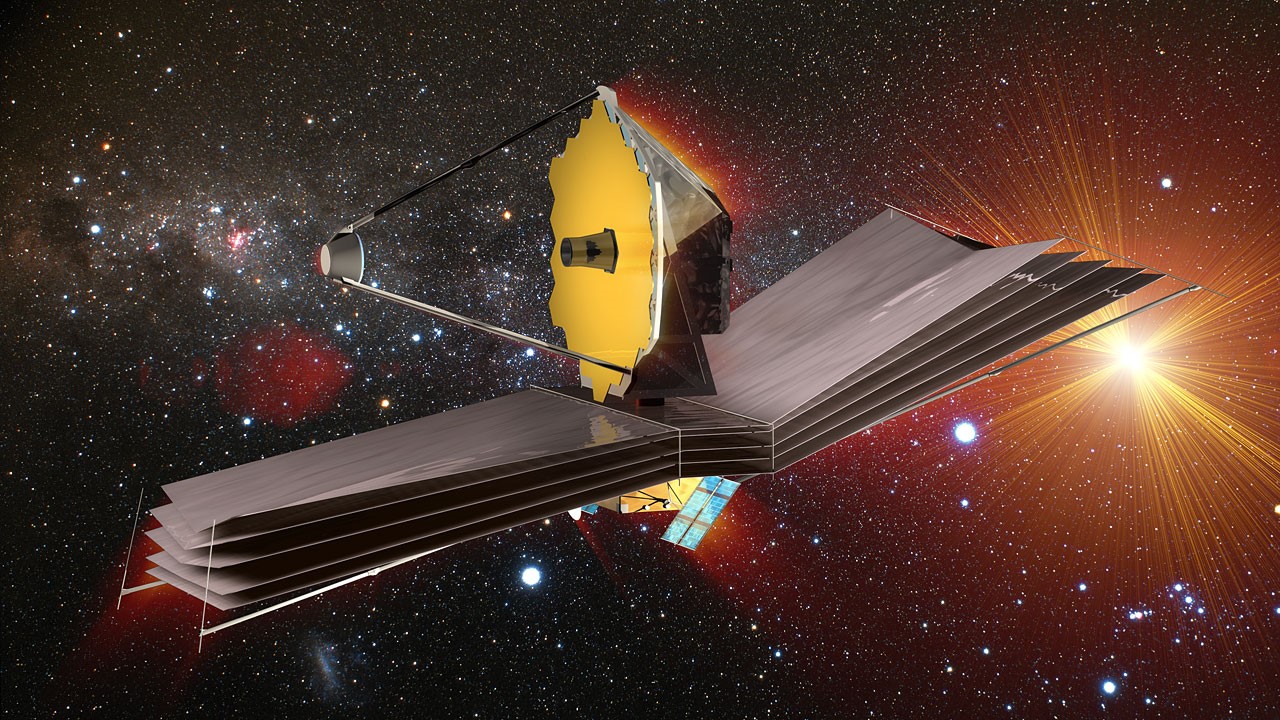
The technology has come a long way since Hubble's early years, and the James Webb Space Telescope project has been pushing it further along the way.
"The detectors on JWST have 2000 by 2000 pixels. And we have lots of them," McCaughrean said. "We have many more infrared pixels [on JWST] than Hubble had optical pixels when it was launched."
So what exactly will all those pixels (in combination with all the other aspects of the mission that make it so ground-breaking) enable James Webb Space Telescope to do?
The James Webb Space Telescope's giant mirror will feed the light of stars and galaxies into four cutting edge instruments designed not only to take images, but also to analyze the chemical composition of the near and distant universe. This is done with a technique known as spectroscopy, which looks at how matter in the universe absorbs light. As different chemical elements absorb light at different wavelengths, astronomers will be able to reconstruct what stars, nebulas, galaxies and planets within James Webb's Space Telescope's sight are made of.
"The James Webb Space Telescope instruments are a factor 10 to 100 [times] better than anything previously available," Randy Kimble, JWST project scientist for integration, test and commissioning at NASA's Goddard Space Flight Center in Greenbelt, Maryland, told Space.com. "In some of those mid-infrared wavelengths, there's probably an advantage of 1,000 for some kinds of observations."
These improvements in the resolution of infrared imaging are critical for imaging the furthest reaches of the universe. Where the Hubble Space Telescope, or the recently retired infrared telescope Spitzer, could provide only a rough estimate of an ancient galaxy's age and chemical composition, Webb will deliver with precision, added Kimble, who previously worked on instruments for the Hubble Space Telescope, including the Wide Field Camera 3, Hubble's most advanced instrument, which was installed during the final servicing mission in 2009.
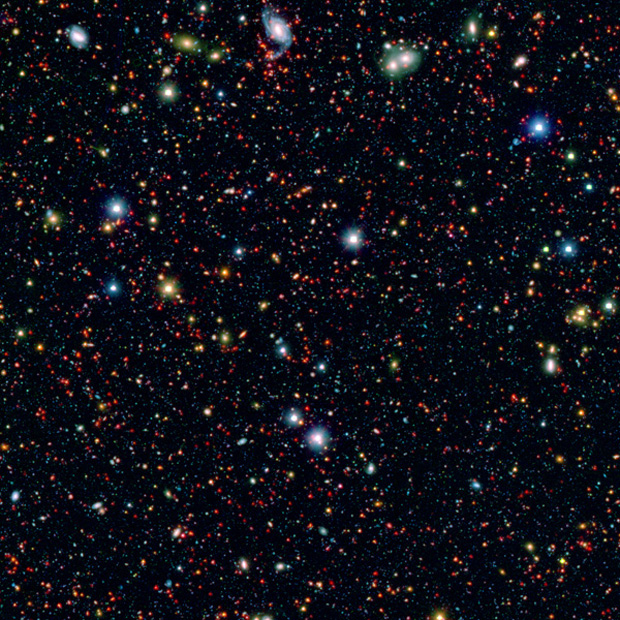
Untangling early star and galaxy formation
It was the Wide Field Camera 3 that opened some of the best views into the early universe. Webb, Kimble said, is now positioned to surpass that legacy.
"When it comes to these distant galaxies, the Wide Field Camera 3 runs out of wavelength," said Kimble. "Some of those detections get kind of iffy and it will be very interesting to see which ones turn out to be right. Webb will be able to do that kind of thing, to say exactly that we see this particular galaxy 250 million years after the Big Bang."
Hubble, McCaughrean says, can see up to 13 billion years into the past. And it already sees galaxies that by that moment in their evolution may have formed several generations of stars.
"If we are seeing that material some 500 million years after the Big Bang, it must have been made even earlier by stars we haven't yet seen," said McCaughrean. "Big stars form and die quickly, in only a few million years, so after 500 million years, you may have had lots of generations of massive stars."
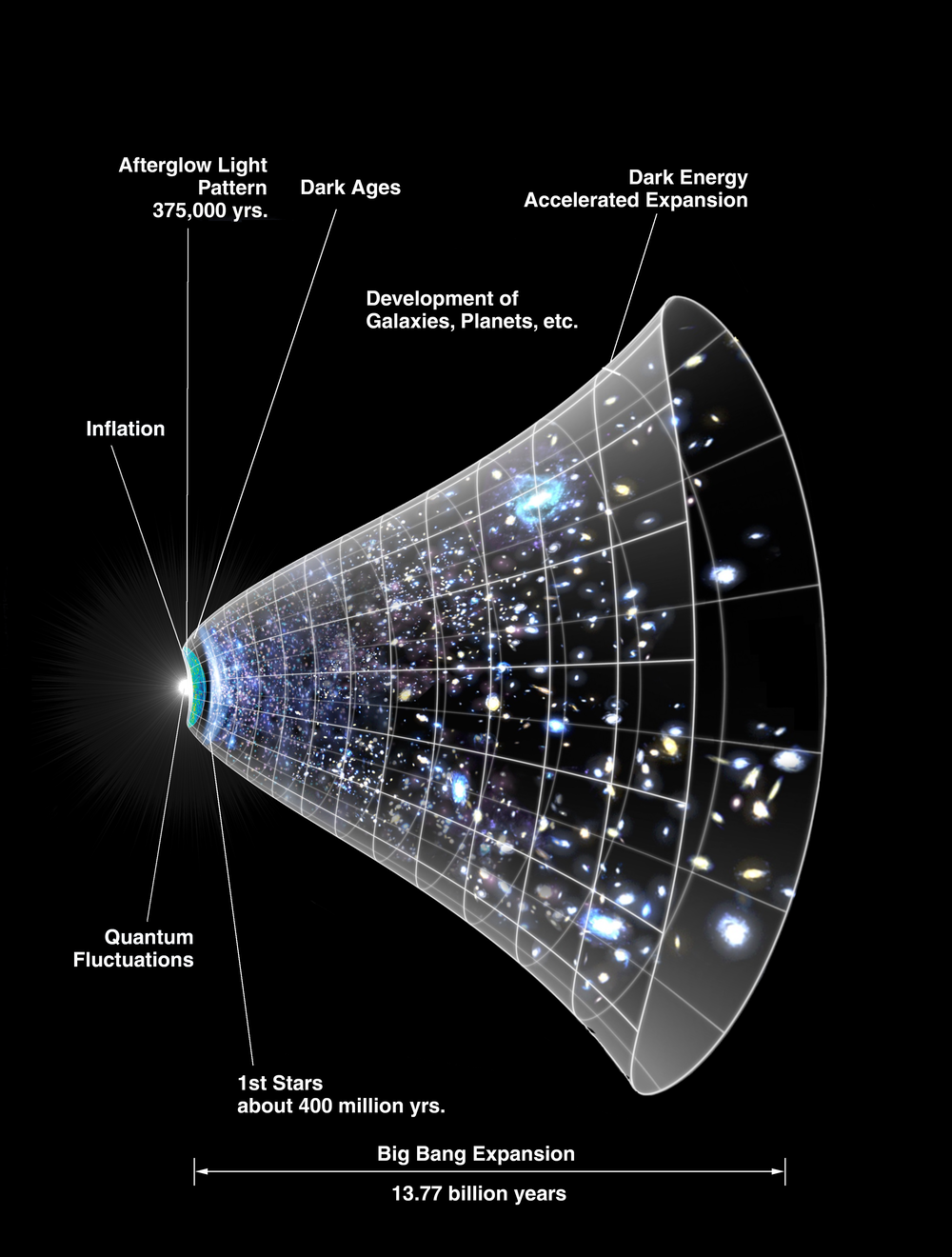
The chemical evolution of the universe
Olivia Jones, a JWST scientist at the Royal Observatory in Edinburgh, is most interested in what happens when these early stars die, releasing their material into their surroundings, to give birth to new stars. Astronomers know that the early universe had a very different chemical composition from what we see today. It consisted only of hydrogen, helium and a little bit of lithium, Jones told Space.com. All the other chemical elements that we see now, including those that make life possible, were cooked up throughout eons inside those stars.
"A lot of the chemical synthesis in the universe is around massive stars when they explode, or low mass stars in their final stages of evolution," said Jones. "There's lots of interesting, slow process chemistry that can happen in their atmospheres because of the temperatures and pressures. And it's just fascinating to me how we can go from having only three chemical elements to the vast array of diversity we see around us today."
The spectroscopes aboard the James Webb Space Telescope will be able to probe the chemical kitchens of those early galaxies, seeing what was cooking inside individual stars and what they fertilized the wider cosmos with when they exploded in powerful supernovas.
"Spectroscopy is the real power of Webb," said Jones. "We typically see this process on galactic scales but with Webb, we will have such a high resolution that we will be able to view individual objects."
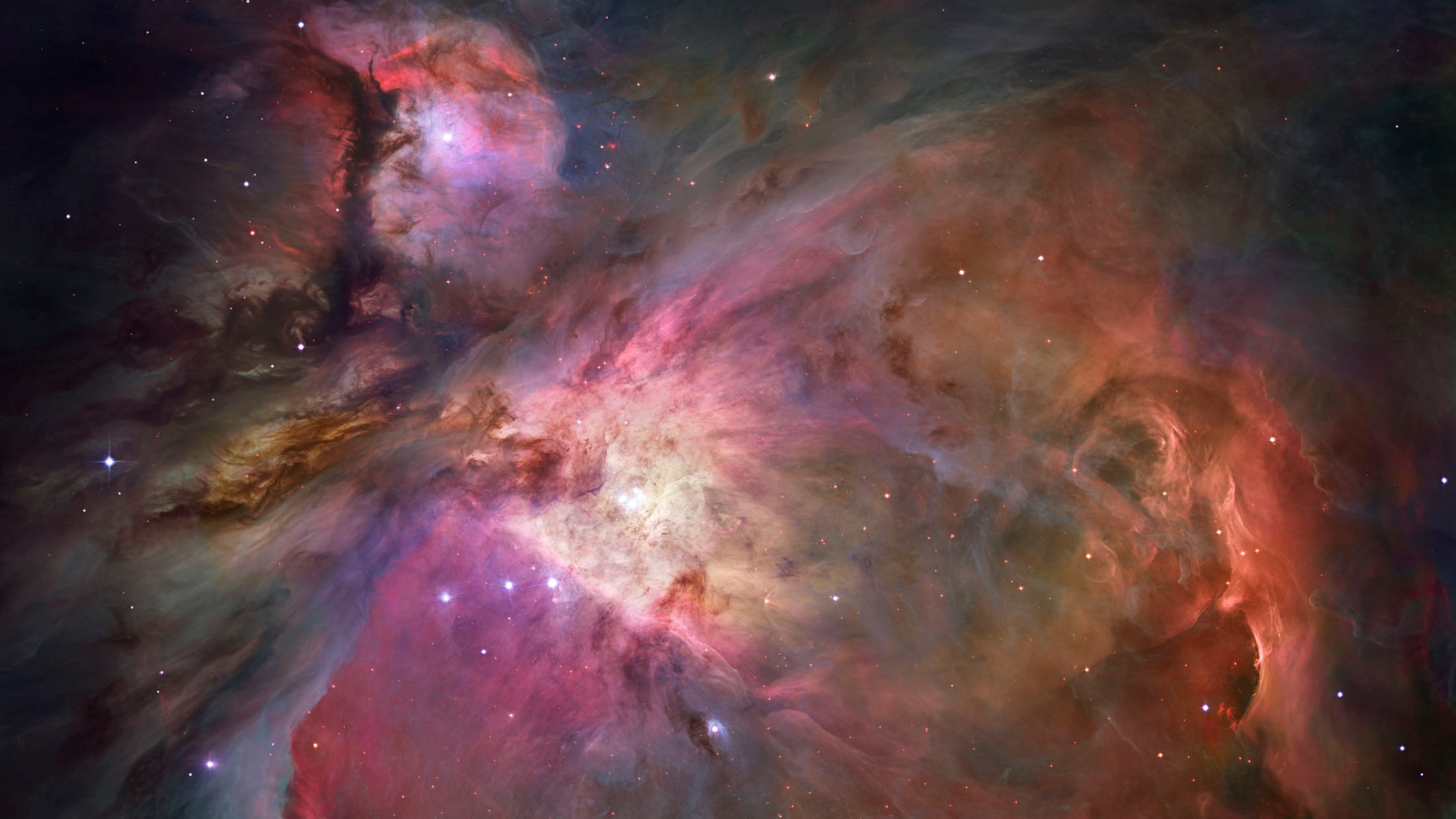
Peering through dust into the hearts of star-forming regions
While the James Webb Space Telescope and the Hubble Space Telescope are frequently compared, their images will be quite different, revealing different aspects of the universe. While Hubble's strength is imaging the visible universe, Webb's infrared superpowers will enable the telescope to see through dust right into the heart of nebulas, galaxies and star-forming regions that are hidden from Hubble's view.
"We know that stars are being born in places like the Orion Nebula and other nebulae in the sky," said McCaughrean. "But we couldn't see into them in the optical because optical light gets absorbed by dust."
Previous infrared observatories, such as NASA's Spitzer Space Telescope, were much smaller than Webb. Therefore, they couldn't see as far as Webb, and when they did, they only glimpsed those star-forming regions in a limited resolution.
"Previously, when we could see the site of star formation, we would see multiple objects all mushed in together," said Jones. "Webb will be able to separate them all out individually. We would be able to see multiple stars being born in clusters where previously we could only detect those clusters."
While astronomers have been able to map star-formation in our own galaxy, the Milky Way, the James Webb Space Telescope will rip open star birth centers in farther away reaches of the universe.
"We will see the more distant, more extreme galaxies, where the environmental conditions are very different from what we see in the Milky Way," said Jones. "Previously, we could only see stars about 8 times the mass of the sun but now we should be able to see the formation of stars about as big as the sun and that process has never been observed before."

Outer solar system
But it will not all be about far away places. Scientists interested in Earth's more local neighborhood will also have their fun with Webb.
"With JWST, we can't look inwards towards the sun, but we will be able to look outwards," said McCaughrean. "We can look at planets like Mars, Jupiter, Saturn, Uranus and Neptune but also into the Kuiper Belt."
The Kuiper Belt is a repository of comets, asteroids and other debris that encircles the outer solar system beyond the orbit of Neptune. It's a dark and cold region that is very difficult to explore because these objects reflect very little light.
"JWST can do fantastic spectroscopy on the Kuiper Belt objects," said McCaughrean. "These objects are really cold, they don't reflect much light, so you need a big infrared telescope. We know they have ices and various molecules on their surfaces, and we hope to be able to see that."
Exoplanets
Just like with Hubble, science has moved forward since the conception of the James Webb Space Telescope and new areas have emerged that may not have been foreseen when the first light machine was first conceived. In 1995, the first two planets orbiting another star than our sun were discovered. Since then thousands of exoplanets of various sizes and kinds have been detected. And while not designed with these potential other Earths in mind, the James Webb Space Telescope turns out to be positioned to not only discover many more, but also to tell us much finer details about their nature than any other mission before.
"These planets have atmospheres that have various molecules in them," said McCaughrean. "Things like carbon dioxide, oxygen [and] nitrogen. And to look at these molecules, that's really best done with infrared spectroscopy."
One of JWST's instruments, the Near Infrared Camera (NIRCAM) is fitted with extra implements called coronographs, which block out the light of a star to see more clearly what is happening around it. That indeed, might involve alien systems of planets, some of which might be habitable, with water and atmosphere that could support life just like Earth.
"Thirty years ago, nobody would have imagined that we could study the composition of atmospheres of planets around other stars," said Kimble. "Now we are doing it routinely, and Webb is going to do that much better."
The great unknowns
The James Webb Space Telescope was built to revolutionize astronomy. Ten years from now, many of its most ground-breaking discoveries may come from realms that are still completely unknown today.
"What is so exciting about both Hubble and Webb is that they are general purpose observatories," said Kimble. "They had some specific key science goals, but they have a broad range of capabilities that enable them to make discoveries that were not in the areas that you designed the telescopes for. If you do Hubble's top 10 greatest hits, half of them were things they knew they were building it for and half of them were things that people had no idea about, like dark energy and exoplanet studies. I hope the same will be true for Webb."
It will be young astronomers such as Jones, who was only a little girl when the James Webb Space Telescope was conceived, who will be unravelling those great unknowns for decades to come.
"The James Webb Space Telescope will change our view of the universe," said Jones. "And it's only thanks to people who thought about it when I was maybe only at primary school, that people like me can now make the most of it at this stage of our careers."
James Webb Space Telescope Instruments
The Near Infrared Camera (NIRCAM):
NIRCam will be crucial for accomplishing Webb's flagship goal: detecting the light from the earliest stars and galaxies. It's not just a simple infrared camera, but is fitted with some extra implements called coronographs. The coronographs will enable astronomers to block out the light of a star and look at what's happening around it, which makes it great for discovering orbiting exoplanets.
The Near InfraRed Spectrograph (NIRSpec):
NIRSpec is the main tool for cracking the chemistry of the universe. It will split the light coming from the distant universe into spectra, revealing the properties of the observed objects, including their temperature, mass and chemical composition.
Because some of these objects are extremely distant and the light coming from them will be extremely faint, the James Webb Space Telescope, despite its giant mirror, will have to stare at them for hundreds of hours. To make those observations more efficient, NIRSPec will be able to observe 100 such distant galaxies at the same time.
"It basically lets you open little doors and let the light through from one galaxy, but then block off all the light from everything else," said McCaughrean. "But you can open 100 doors at once, for example. So that's very sophisticated and that's never been flown in space."
The Mid-Infrared Instrument (MIRI):
MIRI is a combination of a camera and a spectrograph, but unlike the previous two, it observes in the longer wavelengths of the mid-infrared part of the electromagnetic spectrum, which will make it a go-to instrument for everyone looking to study everything from comets and asteroids at the outskirts of the solar system to newly born stars and distant galaxies. The images of MIRI will be the most akin to those that turned the Hubble Space Telescope into a legend.
The Fine Guidance Sensor/Near Infrared Imager and Slitless Spectrograph (FGS/NIRISS):
FGS/NIRISS will also contribute to the detection of the first light, spot exoplanets and analyze their chemistry.
Follow Tereza Pultarova on Twitter @TerezaPultarova. Follow us on Twitter @Spacedotcom and on Facebook.
Join our Space Forums to keep talking space on the latest missions, night sky and more! And if you have a news tip, correction or comment, let us know at: community@space.com.

Tereza is a London-based science and technology journalist, aspiring fiction writer and amateur gymnast. Originally from Prague, the Czech Republic, she spent the first seven years of her career working as a reporter, script-writer and presenter for various TV programmes of the Czech Public Service Television. She later took a career break to pursue further education and added a Master's in Science from the International Space University, France, to her Bachelor's in Journalism and Master's in Cultural Anthropology from Prague's Charles University. She worked as a reporter at the Engineering and Technology magazine, freelanced for a range of publications including Live Science, Space.com, Professional Engineering, Via Satellite and Space News and served as a maternity cover science editor at the European Space Agency.









